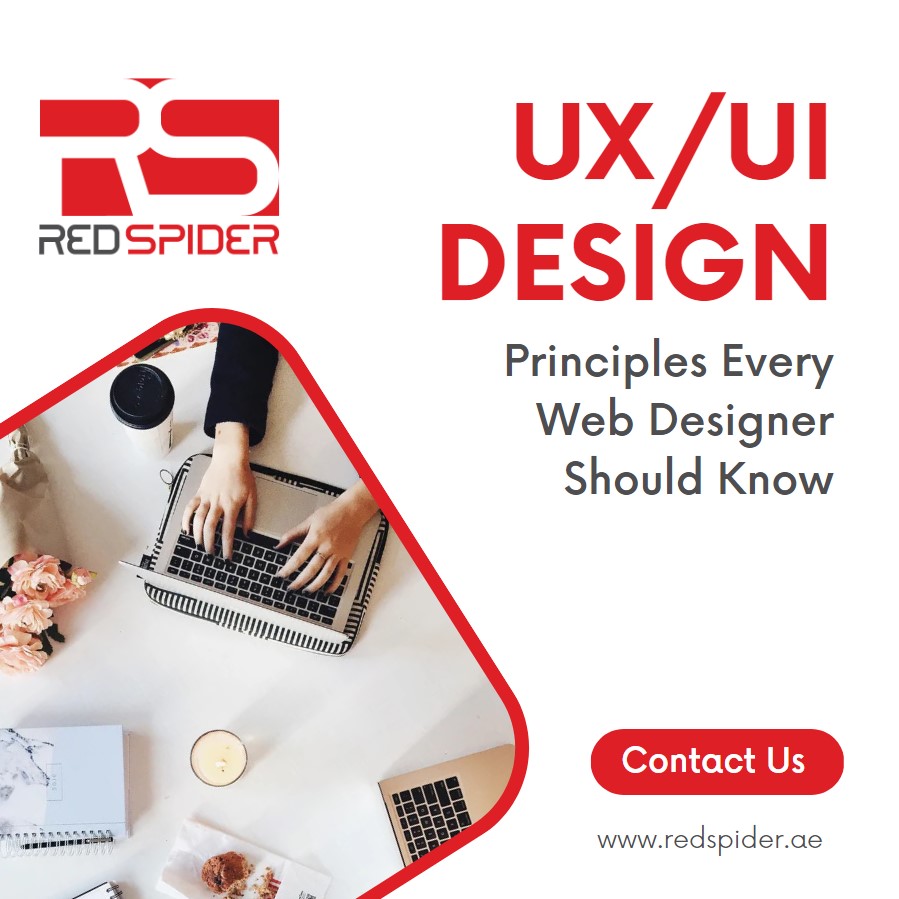Creating an exceptional user experience UX/UI Design Principles and a visually appealing user interface (UI) are critical aspects of successful Web Design. These design principles form the foundation for crafting websites that are both user-friendly and aesthetically pleasing. We will delve into the essential UX/UI design principles that every web designer in Dubai is well-versed in.
 Simplicity is Key
Simplicity is Key
To begin with, the principle of simplicity serves as the cornerstone of effective UX/UI design. Designers must avoid clutter and complex elements that overwhelm users. Instead, opt for clean layouts, minimalistic visuals, and straightforward navigation. Simplicity doesn’t mean sacrificing creativity; it means distilling complex ideas into user-friendly designs. Strive for clarity in messaging, content arrangement, and visual elements. Dubai Web Designing companies offer design facilitates that faster user comprehension, leading to more meaningful interactions.
Consistency Creates Coherence
Consistency in design elements and patterns across a website ensures a seamless user experience. From typography and color schemes to buttons and icons, maintaining a consistent look and feel enhances user comprehension and navigation. Consistency isn’t just about aesthetics; it’s about building trust with users. By maintaining a consistent design language, users develop a sense of familiarity as they navigate through different pages. This familiarity enhances their confidence in exploring the website further.
Prioritize Visual Hierarchy
Employing a clear visual hierarchy guides users’ attention to the most important content. Implement size, color, and contrast variations to emphasize key elements and help users easily understand the content’s structure. Visual hierarchy is like a road map for users, guiding them through the content effortlessly. Larger fonts, contrasting colors, and strategic placement of elements draw attention to what matters most. This principle enhances user engagement by highlighting the content’s relevance.
Responsive Design for All Devices
In today’s multi-device landscape, responsive design is paramount. Designers should create layouts that adapt seamlessly to various screen sizes, ensuring a positive user experience regardless of the device being used. Web Design in Dubai involves a diversity of devices that demand flexibility in design. Responsive design ensures that users have a consistent experience across devices, whether they’re using a smartphone, tablet, or desktop. This adaptability accommodates users’ preferences and browsing habits.
Intuitive Navigation
Intuitive navigation enables users to explore a website effortlessly. Employ user-friendly menus, breadcrumbs, and clear call-to-action buttons, reducing the effort required to find information and navigate through the site. Web designers in Dubai think of navigation as the street signs of your website. Well-designed navigation structures lead users to their desired destinations without confusion. Easy-to-find menus, clickable logos that return users to the homepage, and well-labeled links make for smooth journeys.
Accessibility Matters
Designing for accessibility ensures that all users, including those with disabilities, can access and interact with your website. Adhere to WCAG guidelines, incorporating alt text for images, proper heading structures, and keyboard navigation. Designing inclusively is not only ethically sound but also enhances the user experience. Features like resizable fonts, descriptive alt text for images, and clear focus states for interactive elements enable all users, regardless of their abilities, to interact with your website effectively.
Fast Loading Speed
Users have little patience for slow-loading websites. Optimizing images, utilizing caching, and minimizing code contribute to faster loading times, enhancing the overall user experience. A slow-loading website can deter even the most patient users. Optimizing images, compressing files, and reducing unnecessary scripts contribute to quicker loading times. A fast website not only keeps users engaged but also positively impacts search engine rankings.
User-Centric Content
Web designing in Dubai involves creating content that addresses users’ needs and goals is paramount. Understand your target audience, craft compelling headlines, and ensure that the content is scannable, making it easy for users to find the information they seek. User-centric content goes beyond SEO; it caters to users’ needs and aspirations. Craft content that solves their problems, answers their questions, and provides value. User-focused content leads to longer engagement times, increased conversions, and a loyal user base.
Feedback and Affordance
Effective design provides feedback to users, confirming their actions and maintaining a sense of control. Use micro-interactions, such as highlighting a clicked button, to give users immediate visual feedback. Incorporate affordance, making interactive elements visually distinct to indicate their function.
Embrace White Space
White space, or negative space, doesn’t have to be empty. It enhances content readability and separates elements, preventing visual clutter. It also provides a sense of breathing room, allowing users to focus on what’s essential without feeling overwhelmed.
A/B Testing for Optimization
A/B testing involves creating two versions of a design and comparing their performance to determine which one is more effective. Regularly conduct A/B tests for different design elements, such as call-to-action button colors or landing page layouts, to continually optimize user experience.
Emotional Design
Emotional design elicits feelings and connections from users. Incorporate elements like relatable images, authentic testimonials, and compelling storytelling to evoke emotional responses that resonate with your target audience, fostering a stronger bond with your brand.
Future-Proof Design
Design should be adaptable to future technological advancements and user preferences. Consider flexible layouts that can accommodate emerging devices, and stay updated with design trends and best practices to ensure your websites remain relevant and engaging.
Analytics-Driven Iteration
Regularly analyze user behavior through tools like Google Analytics. Identify areas with high drop-off rates, pinpointing design flaws or bottlenecks in user flow. Use these insights to iterate on your design, making data-driven improvements that enhance user satisfaction.
Design for Scanning
Users often scan content instead of reading it thoroughly. Use headings, subheadings, bullet points, and concise paragraphs to make content scannable. This accommodates users who are looking for specific information quickly.
Conclusion:
In the world of web design, mastering these UX/UI Design Principles is essential for crafting websites that captivate users and keep them engaged. A skilled web designer in Dubai embraces simplicity, consistency, and user-centric content to elevate the overall user experience to new heights. Incorporating these principles into your design process can lead to websites that not only look appealing but also provide seamless and delightful interactions for every visitor.
 Simplicity is Key
Simplicity is Key

